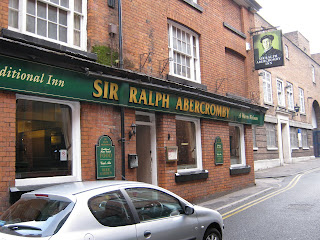

Past & Present















 ..
...JPG)

 .
.

 ..
..

An odd sign on the River Medlock side of the pub states that "Here was the site of Manchester's pissotiére, retained for posterity, last used AD 1896." A pissotiére is, as you can guess, an outdoor urinal! Also note the Hogshead sign which has recently been painted over - most likely a reference to the hogshead unit of ale, which is 54 gallons (other units feature in Manchester pubs past & present - firkin, tun), rather than the name of this or another pub.

Lass O' Gowrie, Charles Street, 2007. (c) markydeedrop at skyscrapercity.
All live matches are also shown here, and literally all sports. There is also a nice little beer garden converted on the side of the building, but this gets a bit whiffy in summer as it sits over the heavily polluted River Medlock. Also a quirk, there are half a dozen table-top arcade games for back in the day gamers such as Scramble, Donkey Kong etc. and these are also all free. This place is now run by a former regular who snapped it up a few years ago after the pub lost popularity. Well he's certainly turned it around, and is one of the finest and therefore busiest alehouses in town - worth searching out the Lass if you haven't been before.


.jpg)
.jpg)







 .
.

 .
.
 .
.